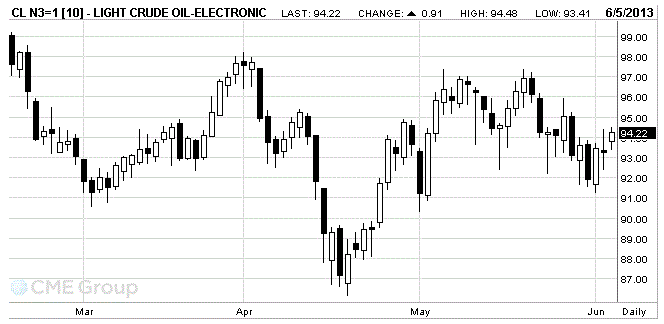Notícias do Mercado
-
16:40
Oil: a review of the market situation
Oil prices rose, closer to $ 104 per barrel, after data showed that U.S. crude stocks fell sharply, signaling the increasing demand in the United States.
Weekly data from the U.S. Energy Information Administration showed that oil stocks last week fell more than 6 million barrels, compared with forecasts at 400,000 barrels decline. Oil also found support from the weekly data from the American Petroleum Institute, which showed a drop in crude oil inventories of 7.8 million barrels.
Meanwhile, it was reported that oil supplies from OPEC countries fell to 700,000 barrels a day last month, accounting for about a third of Iran's exports to the current round of sanctions designed to pressure Tehran over its commitment to the use of nuclear weapons.
Add that earlier today, the price of Brent crude oil rose after South Korea improved incentives for imports, boosting demand prospects. The move by the fifth-largest oil importer in the world aimed at reducing its dependence on suppliers in the Middle East, and to make imports of crude oil from other regions more attractive, which is expected to increase the demand for raw materials.
Investors will also watch the movements of the dollar, which reached session lows against the euro and yen after a report showed that in May, was created fewer jobs in the private sector than expected.
The cost of the July futures on U.S. light crude oil WTI (Light Sweet Crude Oil) rose to 94.22 dollars a barrel on the New York Mercantile Exchange.
July futures price for North Sea Brent crude oil mixture rose $ 0.48 to $ 103.92 a barrel on the London exchange ICE Futures Europe.

-
16:20
Gold: an overview of the market situation
Gold prices rose, after the published data on employment in the U.S. has not met the expectations of experts, and reduced speculation as to what the Federal Reserve may begin to cut back its program of monthly purchases of bonds. It should be noted that the bond purchases are part of the Fed's stimulus package, known as quantitative easing, which helped push the price of gold to record levels in recent years, keeping interest rates at extremely low levels and stoking fears of inflation.
Add that to the dynamics of trade have influenced the data from Automatic Data Processing, Inc (ADP), which showed that in May, the level of private sector employment increased by 135 thousand vs. 171 thousand and 113 thousand (revised from 119 thousand ) in April. According to ADP, employment in firms with the number of employees from 1 to 49 increased by 58 thousand jobs in May. The average amount of business with 50-499 employees attracted 39 thousand new employees. Large firms and enterprises with 500 employees or more added 39 thousand new jobs. Employment in the service sector increased by 138 million in May, and manufacturing employment fell again, this time for 6 thousand positions.
The obtained data raise concern about the state of the labor market in the United States on the eve of Friday's employment report from the Labor Department.
Meanwhile, today it was announced that the total volume of imports of gold from Hong Kong to China in April, down to the level of 125.715 tonnes from a record high of 223.519 tonnes in the previous month, despite a fall in metal prices to two-year low for the month.
Gold remains under pressure on concerns that demand from the customer number one - India, greatly suffer from the recent Reserve Bank of India's measures to curb the import of gold.
The cost of the August gold futures on COMEX today rose to 1406.50 dollars an ounce.

-
06:22
Commodities. Daily history for Jun 4’2013:
Change % Change Last
GOLD 1,398.00 -13.70 -0.97%
OIL (WTI) 93.51 0.06 0.06%
-